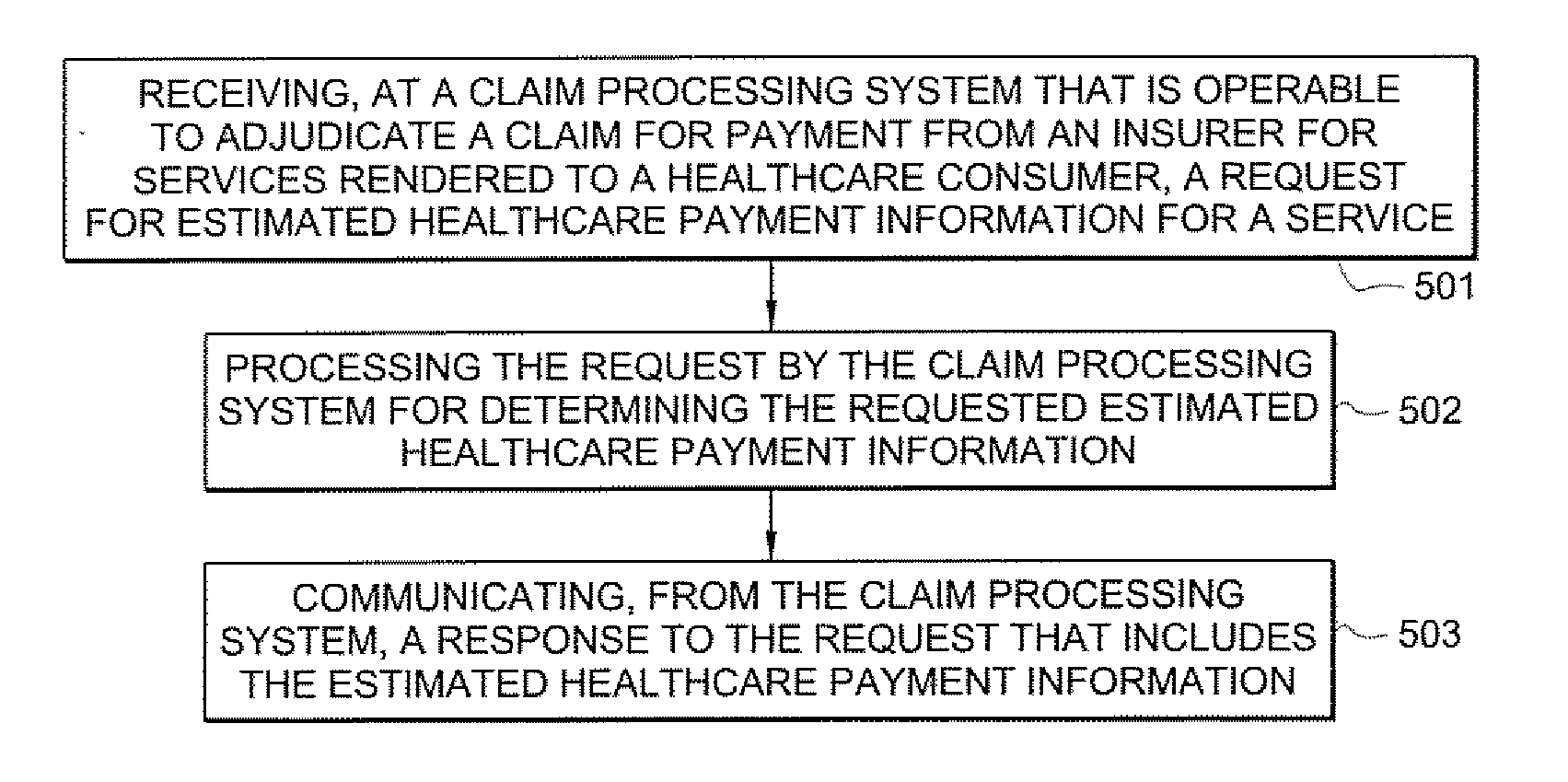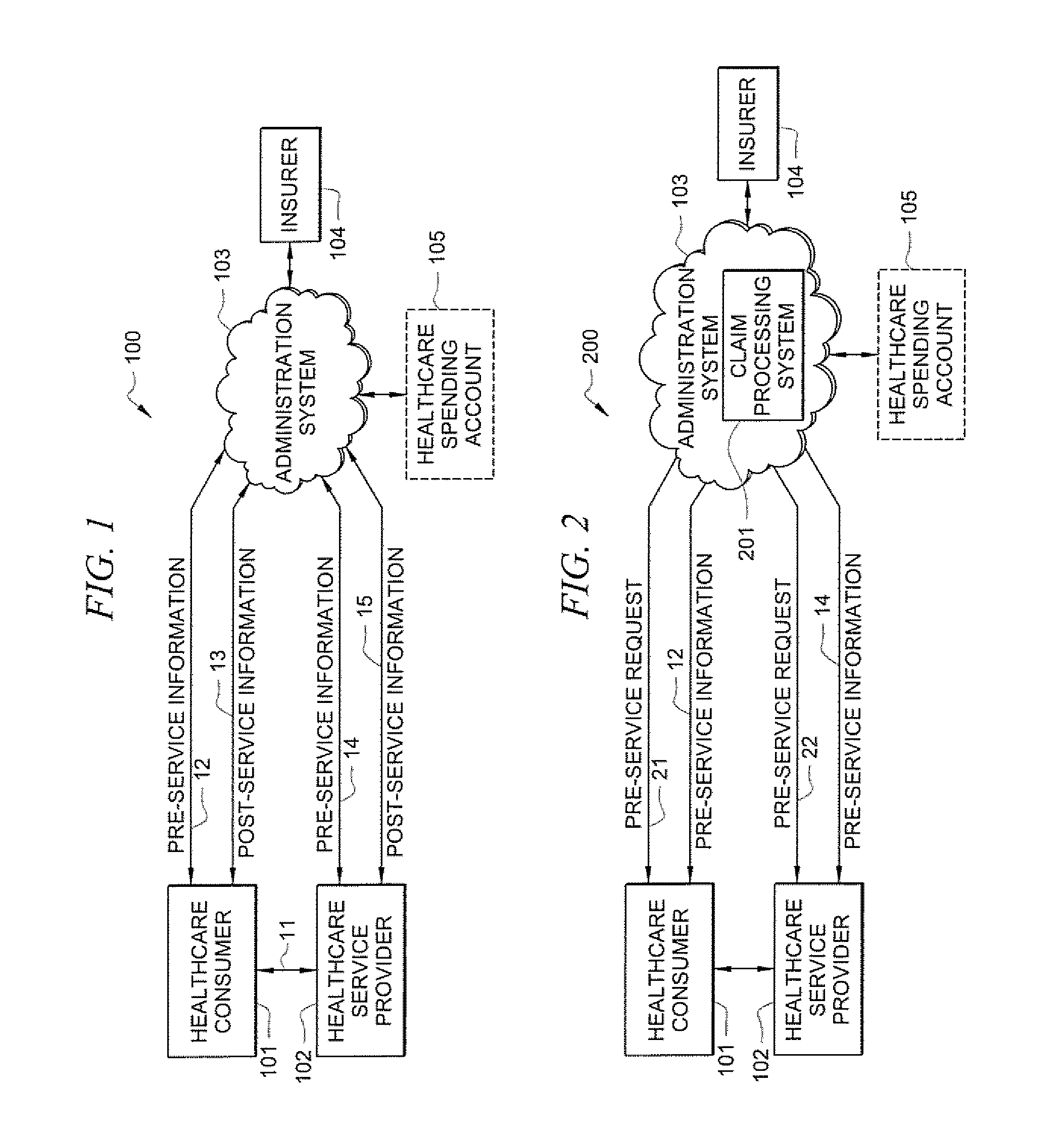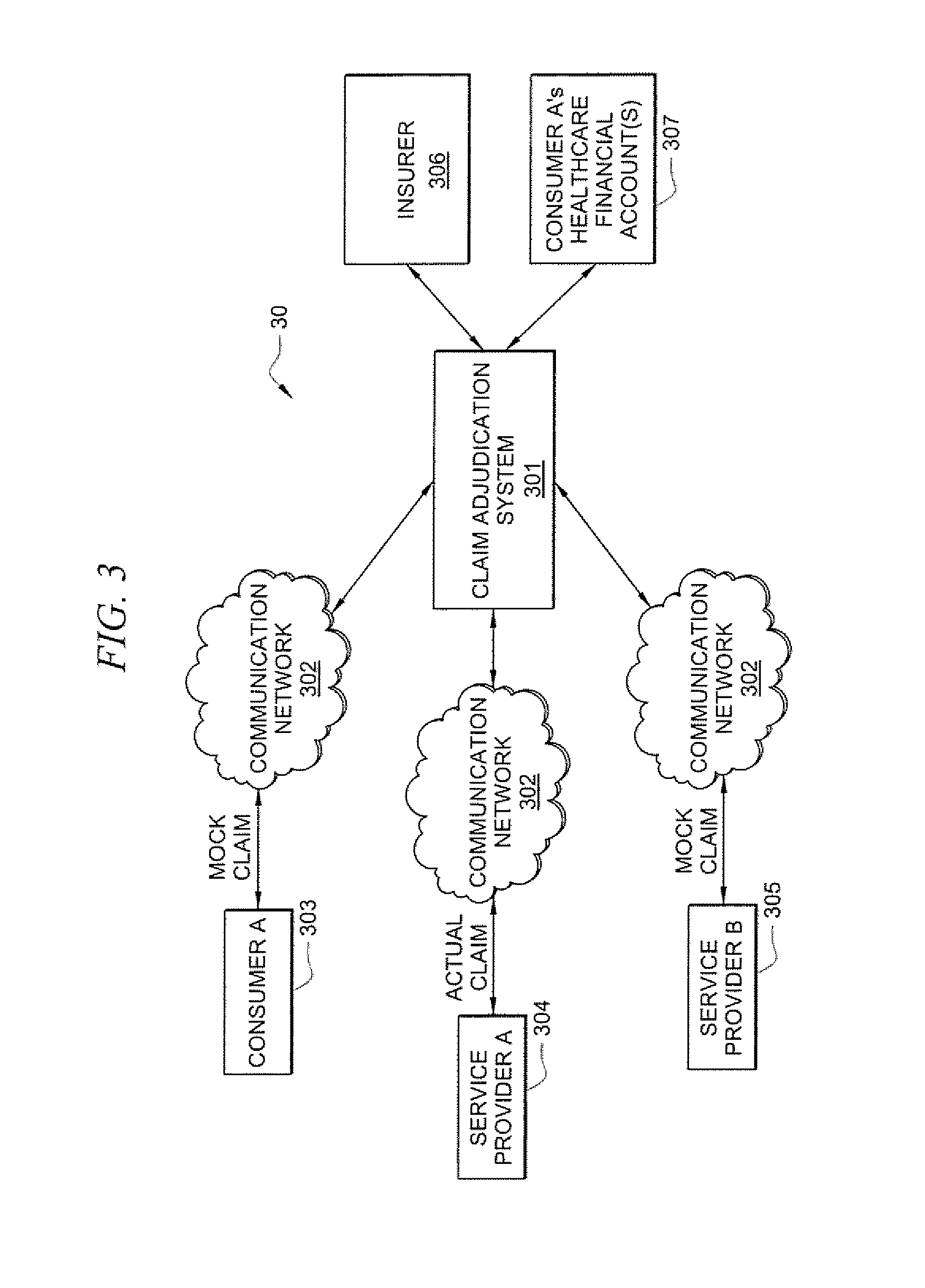Enhanced systems and methods for processing of healthcare information
a technology of healthcare information and enhanced systems, applied in the field of healthcare information processing, can solve the problems of consumers and service providers traditionally failing to understand their respective liabilities, consumers and service providers traditionally failing to fully understand financial, and complex determination of respective liabilities of each party, so as to facilitate multiple access channels, accurate estimation of patient liability, and runtime configurability of administration system
- Summary
- Abstract
- Description
- Claims
- Application Information
AI Technical Summary
Benefits of technology
Problems solved by technology
Method used
Image
Examples
Embodiment Construction
[0092] Embodiments of the present invention provide enhanced systems and methods for processing of healthcare information. Various embodiments enable a request for estimated healthcare payment information to be submitted (e.g., as a mock claim) to a claim processing system, wherein information pertaining to the claim (e.g., payment information, such as the consumer's liability. EOB, etc.) can be returned from the claim processing system without the mock claim being committed / posted against the consumer's insurer. Certain embodiments enable real-time processing of information, such as claim data, to enable various improvements to pre-service and / or post-service processing of information. Thus, certain embodiments offer various improvements along the end-to-end flow of providing healthcare service to consumers. For instance, various improvements to the pre-service processing of information are provided by certain embodiments. That is, embodiments of the present invention enable improv...
PUM
 Login to View More
Login to View More Abstract
Description
Claims
Application Information
 Login to View More
Login to View More - R&D
- Intellectual Property
- Life Sciences
- Materials
- Tech Scout
- Unparalleled Data Quality
- Higher Quality Content
- 60% Fewer Hallucinations
Browse by: Latest US Patents, China's latest patents, Technical Efficacy Thesaurus, Application Domain, Technology Topic, Popular Technical Reports.
© 2025 PatSnap. All rights reserved.Legal|Privacy policy|Modern Slavery Act Transparency Statement|Sitemap|About US| Contact US: help@patsnap.com



